In government contracting, we usually judge leaders’ success by their company’s growth, mission success and reputation. But shouldn’t we also ask how good they are at turning others into leaders?
For Mac Curtis, making leaders out of his team is a big sign of his leadership success.
Five leaders once a part of Curtis’ leadership teams are now CEOs: Jeff Bohling, CEO of Empower AI; Damian DiPippa, CEO of Aretum; Jennifer Felix, CEO of ASRC Federal; John Steckel, CEO of AMERICAN SYSTEMS; and Rocky Thurston, CEO of DMI.
According to Curtis ⏤ currently chairman of the board at Cubic Corp. and previous CEO of 17 years ⏤ the synergy he had with each of these executives came down to a focus on their development. At the companies he led, mission, vision and core values were always clearly defined ⏤ and laid the foundation for how to treat each other, customers and partners, while laser focused on the mission at hand.
“We always had a strategy, always had a plan,” he told WashingtonExec. “We constantly articulated it and reported on our progress to the employees, good and bad. We would communicate all the way down in the organization so everybody knew what was expected. There was an expectation to be accountable and focus on the mission, challenges and threats to our business and develop the plans for the team to execute.”
This rings true for these now CEOs. They talk of Curtis’ ability to communicate the company’s goals and vision; his honesty, transparency and trust; his knack for seeing potential in others; and his skill in motivating teams.
And Curtis will be the first to say when it comes to strategy, pushing people to reach their full potential and working together to thwart threats to the business is key.
“You lay out the framework and you adjust it to the team that you’ve got,” he said.
Fittingly, had Curtis not taken the career path he did, he’d said he’d be a sports coach. He played baseball and football growing up and attended the Virginia Military Institute. Curtis got his start working for a small family-owned business that sold and delivered systems in the maritime industry. He did that for about four years before deciding to put his engineering skills to the test in naval engineering ⏤ and credits his family, mentors and leaders in his life for paving the way, too.
At Advanced Technology, Curtis gained valuable leadership skills and drew entrepreneurial and customer relations inspiration from the company’s founder, Bob LaRose, before moving on.
He was recruited by his mentor ⏤ Paul Lombardi ⏤ a senior executive at PRC who moved to DynCorp to build strategy and its IT business. Curtis led several acquisitions at DynCorp before joining NCS. NCS was bought by textbook publisher Pearson in 2000. Curtis was tapped as president and CEO of Pearson Government Solutions, growing the government business from about $100 million to half a billion dollars.
In early 2007, Veritas Capital bought Pearson Government Solutions. As a corporate carve-out and private-equity-backed company with Curtis at the helm, the company became Vangent. Four years later, Curtis and his team sold the company to General Dynamics for about $1 billion.
And because Curtis was on the board for several Veritas portfolio companies, he was asked to head The SI Organization, in 2013. As its CEO, the company grew from $500 million to $1.1 billion in two years through acquisitions and organic growth. It was then renamed Vencore.
In June 2018, Vencore was one of the three companies involved in the Reverse Morris Trust transaction with DXC Public Sector, Vencore and KeyPoint to form Perspecta, publicly traded on the NYSE:PRSP.
Curtis was chairman and CEO of Perspecta until its sale and his subsequent retirement in May 2021.
It was during these years he met and worked with Bohling, Felix, Steckel, Thurston and DiPippa, “exceptional people that all had the desire to move up and as the light came on with each, I spent time with them developing their leadership skills through coaching and on-the-job training to reach the CEO level,” Curtis said.
Not only did they become CEOs; they carried Curtis’ lessons and influence into their roles.
Long-lasting Impact
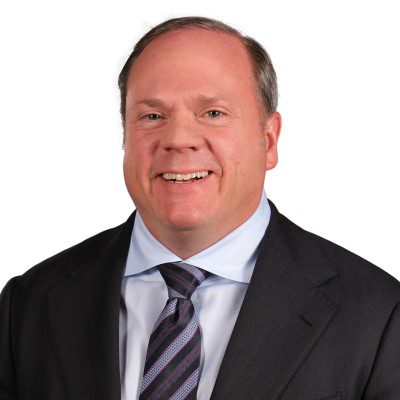
Bohling started at Pearson in October 2001, heading a team in Iowa City, Iowa. He didn’t have much contact with Curtis until a memorable call one Friday afternoon.
Curtis had approved a bid to set up the Transportation Security Agency Screener Program, which urgently required an architect for the proposal in Washington, D.C. As it was already Friday afternoon and most people had plans, Bohling volunteered to go and work on the proposal.
“This decision set a new course for my career,” he said.
They won the bid. Bohling spent the next year working on that contract. This project was so important that he started working closely with Curtis. After the project, Curtis offered to move Bohling to D.C. and sponsor him for the Georgetown Executive MBA program. Bohling’s life and career would not be the same without that offer, he told WashingtonExec.
“The best analogy for Mac’s leadership style is a coach who hates to lose,” he said. “He can be very intense and has high expectations. But when the chips are down, he will lift everyone up. He would tell me that, ‘the sun still came up this morning.’”
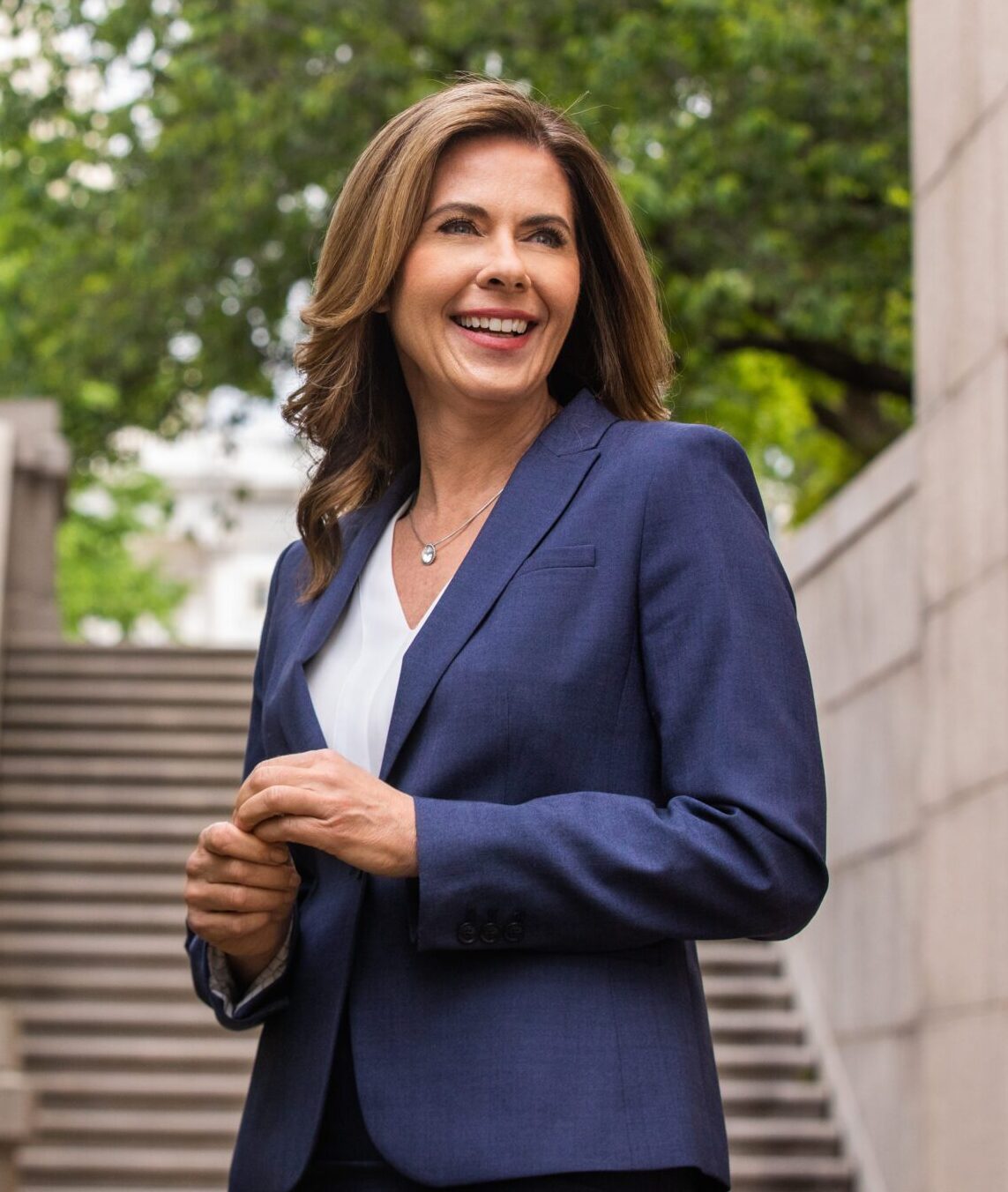
Felix worked with Curtis twice ⏤ first for three years at Vangent, then as his CFO at Vencore until its sale to become Perspecta. She said Curtis was a huge supporter and helped her grow.
At Vangent, Curtis encouraged Felix to take on tasks beyond her usual role, including working the sale of Vangent, which sold to GD. After selling to GD, Curtis strongly supported Felix in taking a different role at GD Corporate, focusing on M&A. He also backed her first CFO position at Sotera Defense.
“He has always been a strong proponent for breaking the glass ceiling for women in business and he practiced what he preached in every way,” Felix said. “I don’t think I would be in the role I am in today without Mac’s support and encouragement,” she added.
Felix also referred to how Curtis could clearly articulate a vision, making it easy to know how the work she was doing supported the company’s goals.
“He can be tough, and make hard decisions, but also very thoughtful and caring ⏤ leading with compassion,” she said. “I always knew he cared about his team as people first.”
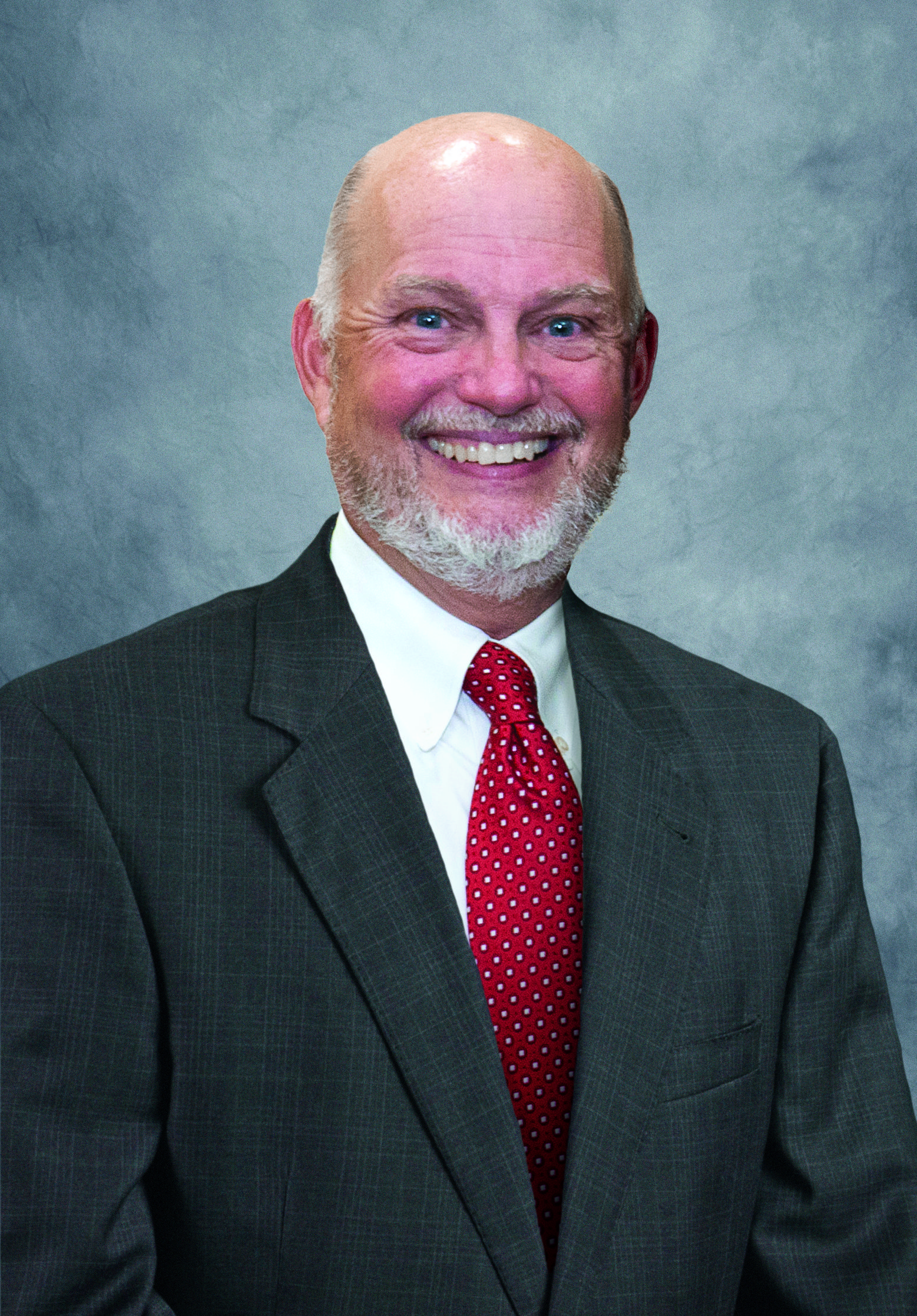
Steckel joined Curtis’ team at Vencore in 2016 as the senior vice president of business development. From 2016 to 2018, they worked together to rebuild the business development organization and prepare Vencore for its change into Perspecta. During Vencore’s transformation into Perspecta, Steckel worked alongside Curtis and played a key role in merging the business development organizations of DXC and Vencore. After this, he moved to the AMERICAN SYSTEMS team.
For Steckel, there wasn’t one specific impactful moment, but many.
“It was more of an environment Mac created,” he said, “an environment that fostered a lot of success from the Vencore team.”
Steckel refers to Curtis’ leadership as dynamic. “[Curtis] takes a hands-on approach to making the business a success,” he said.
Thurston, who started working with Curtis in 2019, when hired to lead the Perspecta Federal Civilian and State & Local business and joining the executive leadership team, noted Curtis’ “hands-on” approach.
“I’ve grown up in environments where I often wondered where the leadership was,” Thurston said. “I never wanted to be that person, and Mac reinforced to me the importance of showing up and being there whenever and wherever your team needs you.”
At times, this meant being personal, too. Thurston recalled the time he and Curtis visited over 10 domestic employee and customer sites in one week. Curtis wanted a handful of new hires and existing leaders on the chartered trip.
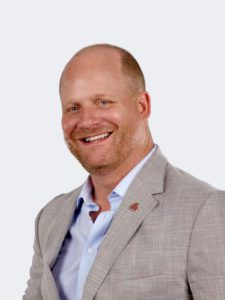
Yet, more importantly, the trip was over Thurston’s wedding anniversary.
“I’ll never forget when we deboarded the plane in middle America somewhere, and my wedding song was playing on the loudspeaker in the terminal!’ he said. “Mac had contacted my wife and coordinated the whole experience.”
While he takes a “tough love” approach, Curtis tries to understand what makes and keeps people motivated, Thurston said.
“When you earn his trust, he will give you full accountability and hold you accountable for results,” he said. “Mac is a leader of integrity and honesty, and he always did what was in the best interest of employees, customers, and shareholders.”
While Thurston didn’t work with Curtis for long, they’ve maintained a close friendship, mentorship and professional relationship.
“I often seek advice and counsel from him throughout my tenure at Peraton and now at DMI,” he said.
The most recent was DiPippa’s relationship with Curtis. Curtis had persuaded him to leave ManTech and come to Perspecta to head the space and intelligence group, a key move for DiPippa’s career. He then worked closely with Curtis and a few other Perspecta executives on the company’s sale to Peraton.
A member of Curtis’ executive leadership team, DiPippa’s job was to create a new strategic vision for the space and intelligence group. From day one, Curtis ensured all members of his team were treated equally, regardless of their tenure, DiPippa said. As the newest member, DiPippa felt his ideas were taken seriously.
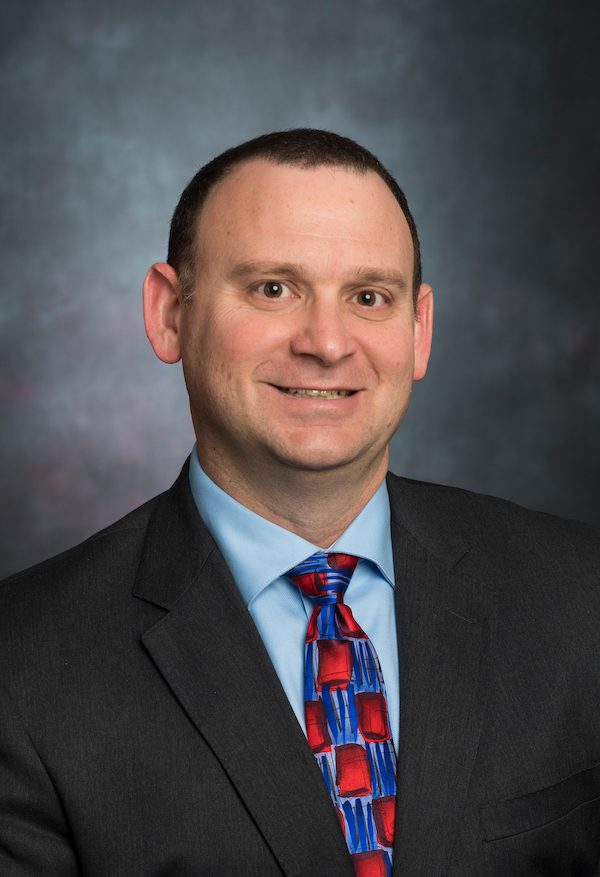
DiPippa recalled Curtis’ promotion of teamwork. He said Curtis stressed honest and ethical behaviors to achieve corporate goals, without micromanaging.
“He believed in building a team of strong and capable leaders, and then he let those leaders take control to do what they needed to achieve their objectives,” DiPippa said.
Curtis also trusted the execs on his team would do what they think is best to move the company forward.
“It was very refreshing and empowering to know that the CEO had confidence in the fact that he hired good leaders and was willing to trust their judgment,” DiPippa said.
Working with Curtis significantly impacted DiPippa’s career. Being involved in the Perspecta sale was a major step up for him. It led to him starting a new $500 million company and then becoming the CEO of another mid-sized company in the private equity sector.
“None of that would have happened if Mac had not convinced me that there were greater opportunities in making a career change,” DiPippa said.
Lessons that Carry On
A good leader’s methods and style can spread throughout an organization and influence future leaders. Curtis’ protégés recall his unique leadership traits and have adopted some of them.
For instance, Curtis would use the phrase, “Do the right thing,” which Bohling found was universally applicable to almost any management situation.
Felix noted Curtis’ values ⏤ he cared about people first and always stood for what he thought was right.
“He led with values and that has been something I think about all the time now and try to emulate,” she said. “The ‘tone from the top’ influences the culture more than anything, and so his personal philosophy really mattered.”
As a CEO, Felix makes a point to encourage others to grow into areas they may not have thought possible ⏤ as Curtis encouraged her to do. Steckel has adopted Curtis’s urgency in business and values teamwork, diversity and listening to different viewpoints.
“Seeing things from others’ viewpoints helps uncover those secondary and tertiary effects a decision can have on a situation,” he said. He believes in the power of teamwork and uses the energy of motivated employees to advance an organization. At AMERICAN SYSTEMS, he leads with this collaborative mindset.
Thurston appreciated Curtis’ discipline and routine, and his ability to stifle interoffice politics and drama to create a positive, non-toxic work environment. Running a business takes discipline to make every day count, he said.
“It was tedious and tiring, but every time it proved how important that routine is to a business,” Thurston added.
Like Curtis, Thurston relies on trust between leadership and employees. He, too, leads by setting a goal and vision for the future, so the company knows where it’s headed and how to get there.
“I work hard at being highly ethical and full of integrity, which means doing the right thing even in the face of unforeseen consequences,” Thurston said. “Like Mac would say, ‘If you do the right thing, how can you be wrong?’”
DiPippa also took Curtis’ strength for communicating his vision, and the importance of honest and ethical leadership, with him.
When DiPippa transitioned from ManTech to Perspecta, Curtis discussed his future CEO potential.
“I was just starting to wrap my arms around the new group I was leading for him at Perspecta whereas he was already talking to me about being CEO one day,” DiPippa said.
Curtis kept his ego and personal preferences in check, staying open to others’ ideas and logical contributions. He began each meeting with a focus on ethics and honesty to maintain a grounded approach.
“Even recently as I was having lunch with Mac and discussing some of the challenges dealing with partners and investors in my current company, he was reinforcing these principles with me; ‘Be resolute in your beliefs, don’t compromise your principles, you know what ‘right’ looks like, stand firm . . . ‘” DiPippa said.
Business of Building Relationships
The GovCon community ⏤ while competitive ⏤ relies on relationships. With the ultimate same goals in mind, forming these relationships is key, and Curtis created high-performing leadership teams because he built relationships and trust with people.
“He kept his commitments to those people and took care of them,” DiPippa said. “He also did this with customers and leaders/partners from other companies.”
Creating these relationships and setting a leadership standard sets the next generation of GovCon leaders up for success, as proven by Curtis’ leadership legacy and those he helped elevate.
This, too, creates a chain of continuous mentorship and giving back. Each of these CEOs expressed a passion for helping employees reach their full potential and exceed their professional goals.
DiPippa is a strong advocate of finding good and accountable leaders and empowering them while cultivating the next generation of leaders. It’s one of the reasons he chose to become the CEO of a mid-sized company rather than continuing with a larger systems integrator.
“In my current role, I am able to work with the next generation of leaders and mentor them,” he added.
Similarly, Thurston leads by doing what’s right.
“Real leaders need to take a stand and not cower to popularity contests,” he said. Real leaders need to get their teams to deliver incredible outcomes. That doesn’t come from a classroom or a book. It comes from experiences.
Steckel focuses on hands-on experiences, too, as he strives to advance leadership development programs and supports internship and mentorship programs, key to identifying and developing future leaders.
“It’s important that we give our future leaders the opportunity to learn . . . leading programs or projects that stretch their capabilities in ‘safe’ environments where they can not only feel valued for doing the project, but also learn from both their successes and failures,” he said.
Felix approaches mentorship with encouragement, fostering employees’ capabilities and helping those dedicated to finding growth opportunities.
“Sometimes, you need someone else to see it in you before you see it in yourself,” she said.
Bohling, in the same vein, hopes to be a mentor for those with potential ⏤ including by sponsoring their MBA and certification programs as Curtis did for him. Through their experiences with Curtis, these CEOs took the impactful, the effective and the memorable with them. Paying it forward as a leader means helping those around you realize their full potential, which is a hallmark of great leadership.
“In our market, if you focus on the people and mission in that order, the financial results will happen, and these leaders embody that approach”, Curtis said. “These are really, really good people. I’m proud of what they’ve accomplished, it is phenomenal, they’ve done so well, and they’re just getting started.”


